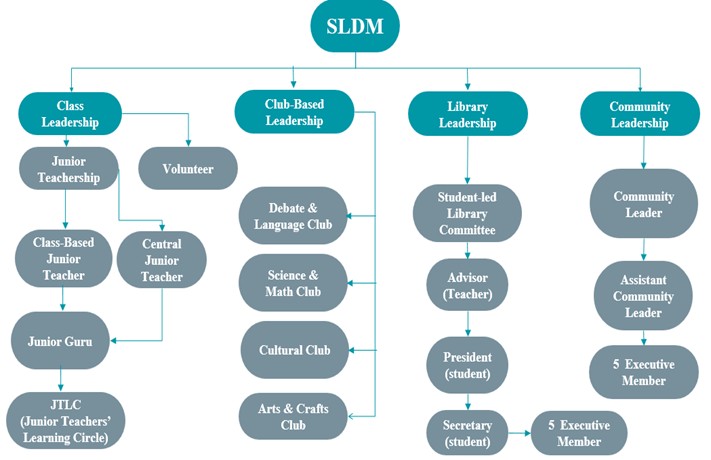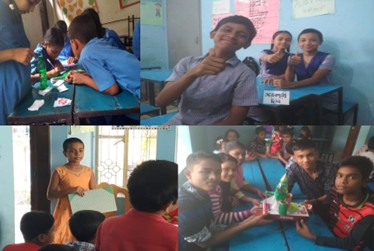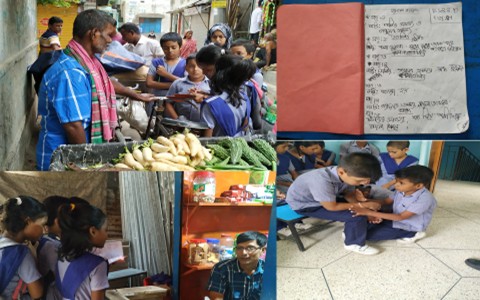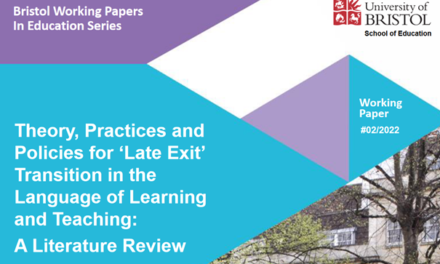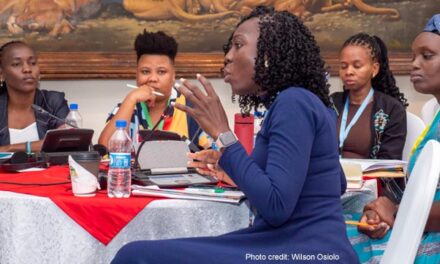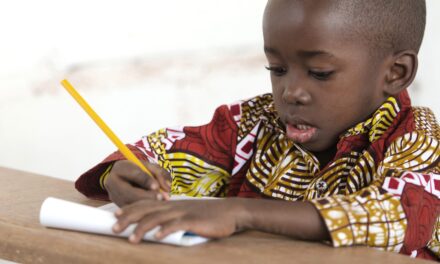This blog was written by Zahirul Islam, former Fellow and Coach at Teach For Bangladesh. Zahirul is currently working as a Technical Coordinator under the education programme at Friendship NGO.
Research says that students stay in school only 20% of their total time and spend 80% of their total time in their community. Keeping this dimension in mind, I developed a holistic model in 2018 named the Student Leadership Development Model (SLDM) which ensures the leadership development of students from the classroom to the community. SLDM allows each of the students to explore their latent talents and flourish their leadership qualities accordingly through engaging in different leadership activities both in the classroom and community.
Basics of SLDM
This model aims to build four qualities (self-awareness, ownership, problem-solving, and communication) among students that will help to transform themselves into leaders. Most importantly, three core values (respect & empathy, interdependence, and sense of possibility) have been considered for students to be a better version day by day.
First phase of SLDM – Class leadership
This model consists of four phases, with the first phase emphasising Class Leadership. This initial phase is divided into two layers: Junior Teachership and Volunteerism. Junior Teachership is a collaborative teaching approach, in which students become partners in the teaching process alongside the teacher. This fosters shared responsibility and goals within the classroom, promoting greater student engagement. Research also suggests that peer learning is particularly effective.
Students designated as Junior Teachers teach various subjects in the classroom, with 3-5 Junior Teachers per classroom rotating responsibilities monthly. To facilitate self-growth, they participate in platforms like JTLC (Junior Teachers’ Learning Circle), where they exchange feedback on teaching for mutual improvement. On the other hand, Volunteerism is used here instead of Class Captain culture.

Junior Teachers are teaching in the classroom and leading sessions at Junior Teachers’ Learning Circle.
Second phase of SLDM – Club-based activities
The second phase of this model, Club-based Activities, refers to giving opportunities for different co-curricular activities to develop students’ full potential: creativity, problem-solving, and leadership skills. There are four clubs (debate & language club, art & craft club, cultural club, and math & science club) and most importantly these clubs will be fully led by students, and teachers will support them only.
Third phase of SLDM – Library leadership
In the Bangladesh context, libraries in most schools are maintained and led by teachers and this does not meet the full purpose at the end. The Library Leadership phase believes that leading a library by the students attracts other students to come and learn. In my school, Sumon, the Office Secretary of the library, lent 478 books in a week which created a history in school life. Even teachers could not lend 200 books in a year to the students. This is a true example of students’ high-level engagement with the library as a result of library leadership led by students.

From right, the Office Secretary (Sumon) of the library is documenting the names of students who come to take books.
Fourth phase of SLDM – Community leadership
Community Leadership says that the way of being of the students is shaped by the community, and how students show up for the community should be a matter of concern for an educator because it is impossible to ensure the holistic growth of students by denying the community context. Considering this, students will work as community leaders under this model. In my school, 30 community leaders executed a capstone project named KFC (Kids for Community). Those community leaders visited 86 homes and shops, identified 176 problems through observation and conversation, and finally figured out 4 ways to solve 5 burning problems out of 176 problems. This amazing project from the young community leaders proves that children only need a platform and other things will be a story of the change.
Impact of SLDM
After implementing this model in an NGO-run school where I did my Fellowship under Teach For Bangladesh, the first impact assessment was done after four months of this model implementation. The key impact results have been shared for better understanding.
- 25% increased attendance across the whole school.
- 100% of students now feel more excited to come and stay in school.
- 92% of guardians believe that their children are now more interested in going to school than before.
- 100% of teachers believe that students’ leadership skills (self-awareness, ownership, problem-solving, and communication) and curiosity have increased.
The current UN Secretary-General, António Guterres, said, “Empowering young people as change-makers means investing in their leadership, not just today, but for a sustainable future for all.” This quote clearly emphasizes developing leadership of young people. So, as a nation, it is high time for educators and educational institutions to invest more time, energy, and strategy for growing students’ leadership so that a better sustainable future can be transformed. One day the story of these young leaders will turn into history.


